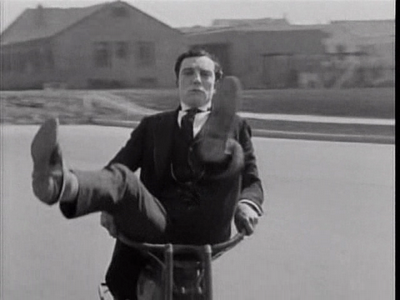In June, 1922, almost a year after Eille Norwood's interview detailed in my companion post HERE , The Strand carried an article by American journalist, Hayden Church, who spent a day on location at Hampton Court with John Barrymore.
The famous actor was in England with his producers and crew "for the purpose of getting the correct settings and the real atmosphere for certain exterior scenes in our film version of 'Sherlock Holmes'...The other scenes will be built in New York where the remainder of the film will be produced."
For Barrymore, this extended a Continental vacation 'climbing Mont Blanc and doing a few other little holiday stunts'. (Church tactfully refrains from mentioning just how much alcohol was consumed and later prohibited back in New York).
 |
| William Gillette as Sherlock Holmes. |
Norwood's Holmes was based on Conan Doyle's stories, while the Barrymore film took as its starting point William Gillette's popular stage play.
And it is Barrymore's film. The article makes clear that it is 'my own idea' to have the studio writers, Marion Fairfax and Earl Browne, write an introduction to the original play: 'In a specially- written prologue they have projected Sherlock Holmes back into the days of his youth...We are thus to see...a young student of a dreamy, indeterminate, half-poetic type'. Watson will be a college friend at St. John's, Cambridge where Holmes will be embittered through early love for Lucy Faulkner and encounter Professor Moriarty. As the script poetically reads: 'At the beginning of the hour I met love and it passed me by. At the end of the hour I met monstrous evil.'
Nicholas Rowe was 19 when he played Young Sherlock Holmes in the 1985 film. John Barrymore was 40 in 1922, about the age of Jonny Lee Miller, who is 4 years older than Benedict Cumberbatch.
This clip of the opening scene makes for fascinating comparison with these modern Sherlocks.
Of special cinematic & historic interest is the detail given in Church's article of exact exterior locations used in the film.
Apart from St. John's College, Cambridge, they filmed in Stepney, at Lambeth Pier, Scotland Yard, Trafalgar Square...and two very carefully chosen places.
Finding both Baker Street and Gower Street too modern or too busy, the film's 221b. is in fact in Torrington Square, where real (former) policemen appeared as extras in the Gillette scene where Moriarty draws off the police through a street disturbance to gain entry to Holmes's rooms. The recent strike had left many policemen jobless and they were obtained as willing extras from the Vigilance Society.
The most intriguing location used was Hampton Court. And, much to his delight, Church was invited to travel there with Barrymore AND play a bit part in the scene. The journalist recalls: 'Sitting there with the mimic Holmes at my side...I was, in fancy, Dr. Watson off with his friend and idol on one of their expeditions.'
Several shots were taken at Hampton Court, most importantly those on a Thames houseboat. Barrymore thought this a novel setting and one that would entrance the American audience.
He also had much to say in that three hour trip about Conan Doyle, whom he compared very favourably to Edgar Allan Poe. For the actor Poe's Dupin was a cardboard marionette in contrast with the 'vivid, vital, living' Sherlock Holmes. Doyle was 'a creative artist' and Barrymore waxes lyrical on the other heroes such as Professor Challenger and Sir Nigel: 'Have you read The White Company?' asks Barrymore. 'To me it is Sir Arthur's finest achievement. I re-read it every two years.'
Fortunately Barrymore's film survives (having I believe been lost for decades). It is available on dvd but not in full on Youtube. I leave the reader with another taste of this 1922 silent Sherlock - Holmes meets Moriarty.
Link.
To read the whole original article in The Strand Magazine in pdf, please click this link CHURCH .
























